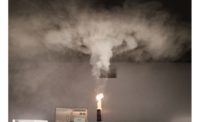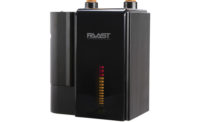A fire in a three-story apartment building in Chicago has resulted in eight deaths. Six children and two adults were killed after the fire broke out at 4 a.m. on Sunday, Aug. 26. Additionally, a teenager and young adult were taken to the hospital and are listed in critical condition. A firefighter was also injured while fighting the blaze. The building did not have a fire sprinkler system. Firefighters were unable to find working smoke detectors in the building. This is Chicago's largest fire fatality loss since the Cook County Administration Building high-rise fire that killed six people in 2004.
Chicago does not require fire sprinklers in existing apartments under 80 feet in height, and when new apartments are constructed fire sprinklers are not required until wood construction exceeds 30 feet in height. There have been three attempts to adopt the International Code Council (ICC) codes, which require all new apartments to have fire sprinklers and existing apartment buildings under 80 feet to have fire sprinklers when renovations occur in the building. Advocates have been educating and encouraging a change in the law for years; however, all attempts have been opposed by numerous building and real estate stakeholders.
This fire joins other recent fires in underscoring the need for fire sprinklers. A fire last week in San Antonio, Texas, claimed the life of one, while a fire three weeks ago in San Marcos, Texas, claimed the lives of five college students. Apartment and condo buildings present unique challenges for life safety, and as facts are examined, the realization that built-in fire protection is needed becomes apparent. A fire in Prospect Heights, Ill., in July caused over $10 million dollars in damage to the River Trails condominium complex and placed hundreds of citizens' and firefighters' lives at risk. Adopting the latest national building fire codes and standards will save lives and properties for decades to come, as these tragedies are avoidable, said the National Fire Sprinkler Association (NFSA).
"It's time for community leaders to realize there are steps they can take to ensure citizens and firefighters are safe," explained NFSA President Shane Ray. "Fire sprinklers are needed in apartment buildings. Progressive cities and states have required this for years -- some, such as Maryland, for decades. Too many lives are being lost. We need to respond with proactive steps to make these buildings safer."
The National Fire Sprinkler Association is firm in the belief that fire sprinklers would have changed the outcome of these fires. Astonishingly, sprinklers were required in apartment buildings more than two stories in height and with more than 16 dwelling units in the 2000 edition of the ICC codes. Eighteen years later, unnecessary deaths are still occurring in apartment building fires across the U.S., NFSA said.
NFSA's Northern Illinois Fire Sprinkler Advisory Board has also responded to this fire, with first-hand information about Chicago issues.
"Smoke alarms warn you when you have a fire and fire sprinklers stop a fire from becoming deadly," said Tom Lia, executive director, Northern Illinois Fire Sprinkler Advisory Board (NIFSAB). "Fire sprinklers were not required when this apartment building was built, and sadly, Chicago codes do not require fire sprinklers if this same building were built today."
According to the National Fire Protection Association (NFPA), fires are more deadly today due to modern furnishings. A fire can become deadly in less than two minutes (NFPA 2018). Fire is fast. Unfortunately, children and older adults often can't hear a smoke alarm or react fast enough to escape the smoke. Fire sprinklers are individually heat activated and only the fire sprinkler closest to fire goes off, keeping the fire small and allowing time for all to escape, according to NFSA.






